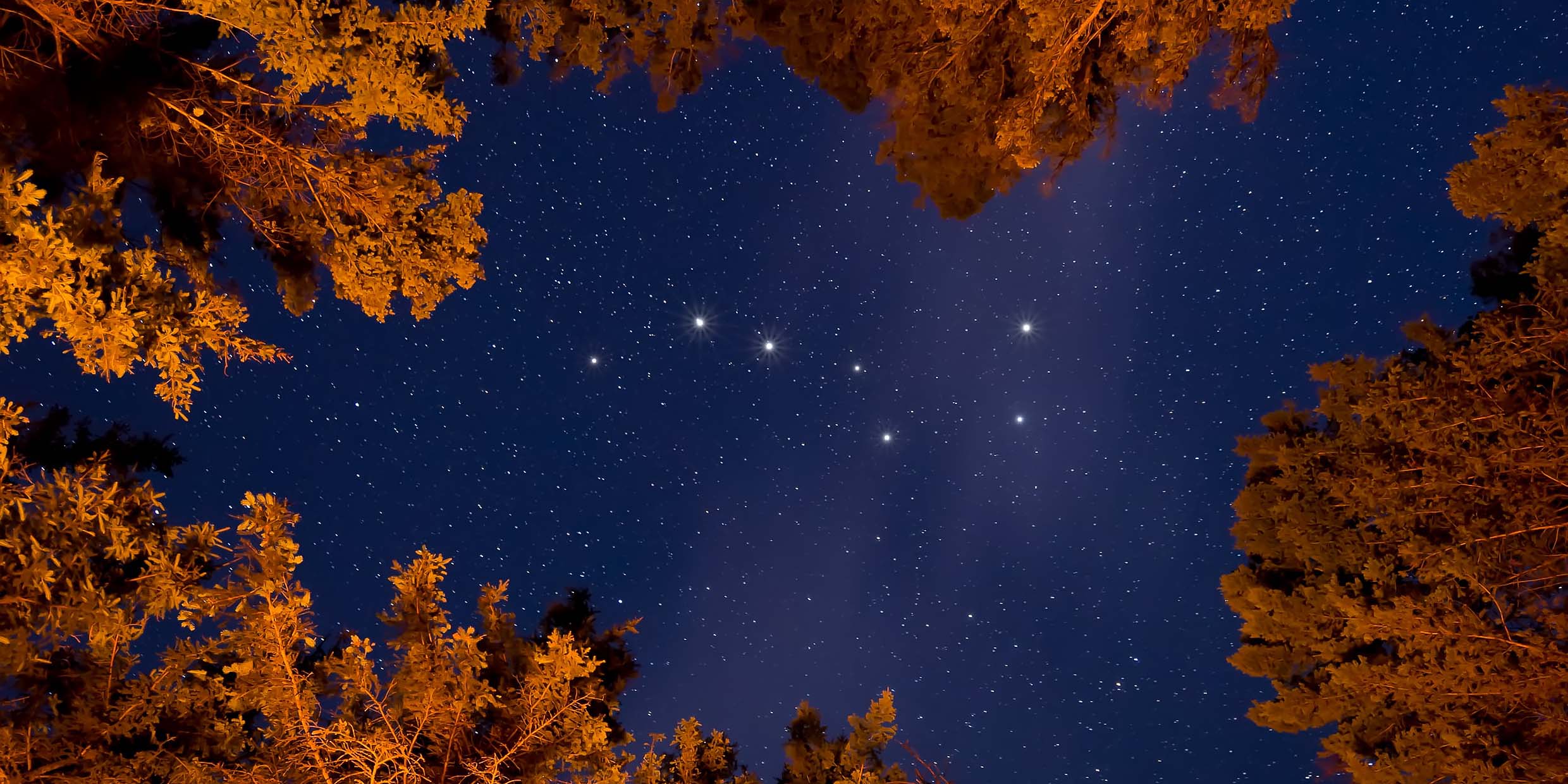Originally published 21 April 1997
A colleague, a teacher of Spanish, asked about the origin of the word “septentrion,” which in both English and Spanish means “the north.”
The Latin root meaning, he says, is “the seven plow oxen.”
The origin of the word was easy to guess. The “seven plow oxen” must certainly refer to the seven stars of the Big Dipper, the most prominent constellation of the northern sky.
No group of stars in the heavens is as well-known and easily recognized as the Big Dipper, famous everywhere as a traveler’s guide to the North Star, and therefore to geographic north. The two stars at the front of the Dipper’s bowl are called “the Pointers.” Follow them out of the bowl and you’ll come to Polaris.
“Dipper,” of course, is a modern designation. The official name of the constellation is Ursa Major, the Great Bear. In certain European and Near-Eastern traditions the seven stars of the Dipper are known as a wagon or a plow, and these are naturally enough associated with oxen. The Romans imagined the oxen moving around a threshing floor, rather than plowing a field, in keeping with the way the constellation turns on the fixed pole.
By the time of Chaucer and Dante the term “septentrion” was applied not only to the seven most prominent stars of northern skies, but also to the north itself. It is in this sense that Milton in Paradise Regained refers to “cold Septentrion blasts.”
The word has gone out of style in English, no doubt because we no longer pay much attention to the stars as guides for travel.
But out-of-style does not necessarily mean out-of-mind. I have often been struck by how readily people fix their attention on the pattern of the Big Dipper when seriously observing the stars for the first time — as if some innate light of recognition snaps on in their minds.
So striking is this ready familiarity with the Dipper that I have sometimes wondered if a map of the constellation might be part of our genetic inheritance.
This idea is not as bizarre as it sounds. It has been demonstrated experimentally that certain migrating birds orient themselves by observing the stars. In a classic series of experiments, Stephen Emlen placed captive indigo buntings in cages under a planetarium sky and tested their response to stellar cues. The birds were able to find north by observing the rotation of the stars about the fixed pole.
Some researchers believe that migrating birds might recognize the pattern of the Big Dipper.
Certainly, birds, fish, and insects accomplish spectacular feats of navigation across continents and oceans using clues from the physical environment, including the positions or motions of stars, and many of these skills are undoubtedly innate. Might not humans also have evolved the ability to recognize a prominent pattern of stars that would help them find their way?
Several things argue against this hypothesis.
First, the place of north among the stars is not fixed. The Earth’s axis wobbles under the stars, like a top that wobbles as it spins. Every 26,000 years, the axis sweeps out a circle in the sky. Today, the axis conveniently points close to the bright star Polaris, but this coincidence is temporary. Fourteen-thousand years ago, the axis pointed towards Vega, and it was the North Star.
At that time, the Dipper was farther from the pole than it is today.
Second, the relative positions of the stars on the sky are not permanent. Every star has some tiny motion relative to the others. These motions do not significantly change the appearance of constellations over many generations; however, over longer periods of time, the appearance of constellations is considerably altered.
One-hundred-thousand years ago, when Neanderthal humans inhabited the Old World, the Big Dipper looked more like a straight-handled spade than a dipper. One-hundred thousand years in the future it will look like a duck.
The rate of genetic change would have to be extremely rapid for natural selection to keep an inborn star map up-to-date on a time scale of tens or even hundreds of thousands of years. This may be why some birds fix on a center of stellar rotation rather than on a particular pattern of stars.
Moreover, the selective pressure of evolution would seem to have been less for human ancestors, who presumably didn’t range far from home, than for migrating birds, for which successful navigation is a matter of life and death.
All of which makes an inborn map of the Dipper highly unlikely.
Still, I’ve seen that light of recognition snap on when people see the Dipper consciously for the first time. I’d love to get some city kids who have never seen a dark sky or heard of the Big Dipper (or Bear, or Plow, or Wagon, or Septentrion) into a planetarium and observe their reactions to a carefully contrived star show, to see if the figure of the Dipper evokes more reaction than arbitrary patterns of equally bright stars.
I have this funny feeling that the association of the Seven Plow Oxen with the north may go deeper than language and culture.



